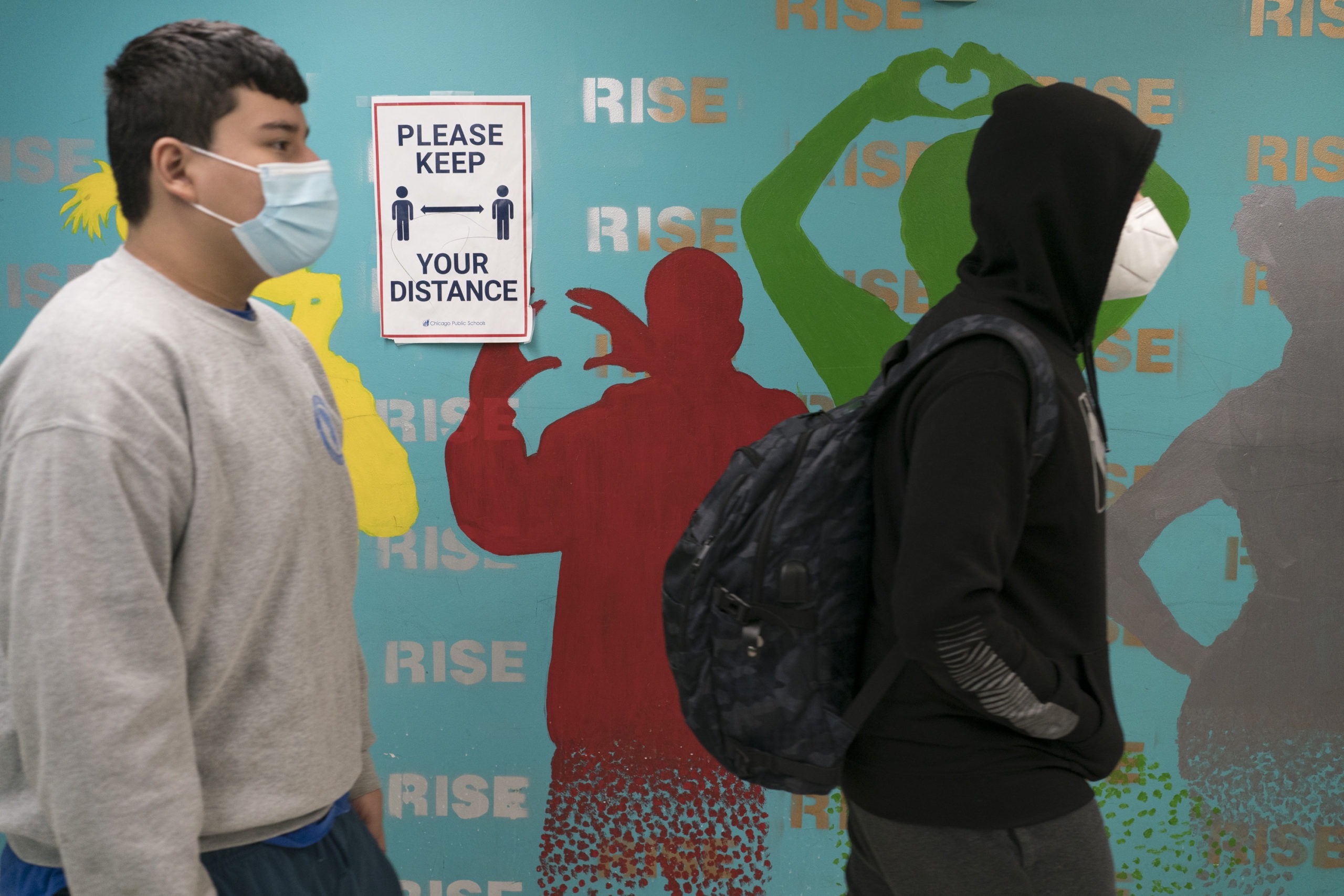The first game of the 2021-22 boys varsity basketball season was not going well for Richards Career Academy, and Keshawn Arnold, the team’s star player, paced by the bench.
He was too wired to sit as the gap on the scoreboard widened.
“Put me in!” the 18-year-old, in a crisp white Warriors uniform, pleaded with Corbin Leeks, his coach and the dean of students at the 240-student high school in the Back of the Yards neighborhood on the Southwest Side. “Put me in for just two minutes.”
Leeks barely shook his head, eyes on the game.
Keshawn and Leeks both knew the senior, one of the team’s top scorers, could shift the course of the game. But they also both knew why Keshawn was sitting that November evening.
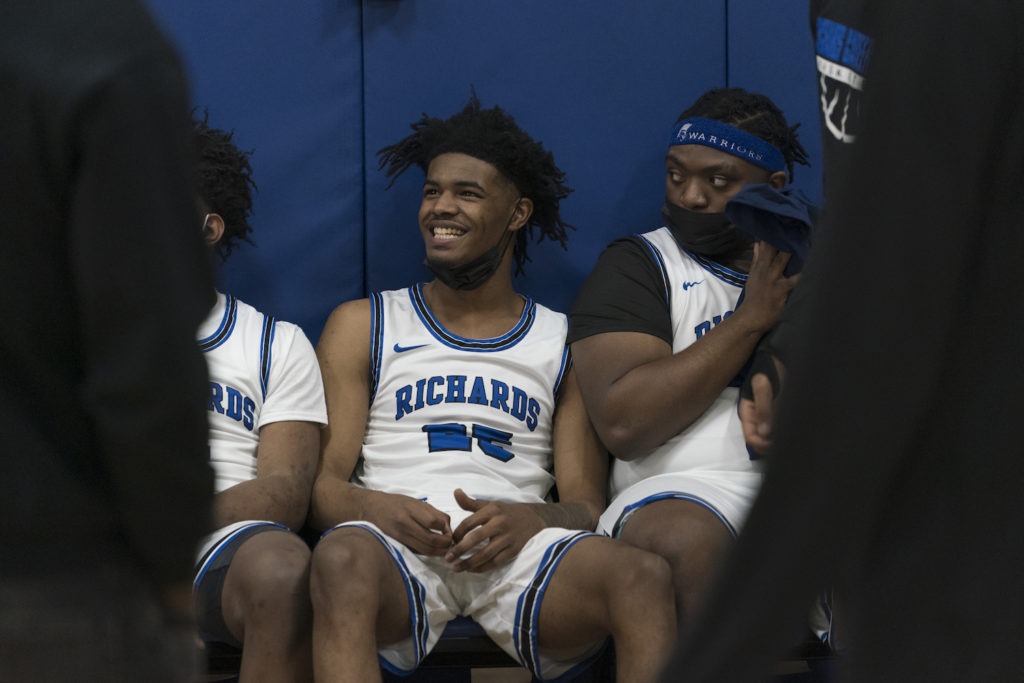
He had struggled to regain his stride academically that fall amid Chicago Public Schools’ high-stakes return to full-time in-person learning — lackluster attendance, lackluster grades, and a blowup with Leeks over wearing a face mask at school that almost scuttled his basketball season. Then again, nearly everyone at Richards has struggled this school year — from the hard-charging principal, Ellen Kennedy, to the especially restless freshman class.
For schools across the country, this school year was supposed to be the moment to recoup academic ground lost during the pandemic and tend to the outbreak’s traumas before high school careers and lives got derailed. It was supposed to be a time to start reinventing public education for teens like Keshawn and the other students Richards serves: half of them Black, another half Latino, almost all poor, a third learning English as a second language, and another third without a stable place to live.
It hasn’t turned out that way.
At Richards, a tough comeback has overwhelmed the students and staff. Attendance is down. Behavioral issues are up. COVID has waned and surged, exploding any semblance of certainty.
By Thanksgiving, two students had been shot in the neighborhood. Staffing shortages turned each day into “an intense puzzle we have to solve really quickly,” as Kennedy put it that November.
Such setbacks have played out across the country, in district after district, at school after school. Here and elsewhere, amid a race to re-engage students in learning, the desire to find new ways of approaching school has collided with the need to just make it through another trying week.
August: Richards braces for the unknown
At the start of the 2021-22 school year, Ellen Kennedy gathered her faculty and staff in a room off the main office. Kennedy, in a Black Lives Matter face mask and ripped jeans, had already drained her large cup from Dunkin’, the only shop she trusts to serve coffee without the caffeine she does not need. Her PowerPoint slides mentioned “elevating our game” and “achieving a vision” — her appeal for that lofty goal of reimagining education.
But standing before her team, she worried she had no clue what the coming weeks would bring.
For Chicago Public Schools and other districts, the school year’s start was meant to be a milestone of normalcy restored. Instead, they grappled with the delta variant, the push to launch testing and vaccination programs, and thousands of children and families who had disengaged from school.
At Richards and elsewhere, amid a race to re-engage students in learning, the desire to find new ways of approaching school has collided with the need to just make it through another trying week.
That day, Kennedy told her team: We have to help our students catch up, but don’t charge ahead as though the past 18 months didn’t happen.
“First, we have to figure out how to function together again and do school,” said Kennedy, who was tapped four years ago to lead Richards.
Kennedy, who had been an assistant principal at Tilden High School, arrived at Richards in May 2017. She found a case study in the disinvestment and dysfunction that have plagued high schools across the city’s South and West Sides: low staff morale, a chaotic campus culture, and enrollment losses that had chipped away at the school’s academic offerings. One seemingly minor issue summed up what she describes as “a school on life support”: No one had set up the bell to ring automatically, so the clerk had to do it manually. She often forgot.
Kennedy and a close-knit team she assembled sought to build a healthier school culture, strengthen academics, and shift the school’s reputation. On the eve of the pandemic, work remained: The school’s graduation rate had improved, though it still lingered shy of 60 percent, well below the 80 percent district average at the time. But enrollment had inched up, and the bell now rang automatically.
Then the last, largely virtual school year slowed Richards’ progress. Case in point: Keshawn.
He had been a promising sophomore when COVID hit: with low grades that often did not live up to his smarts but with strong connections to teachers and staff. Last year frayed those bonds. He was an extrovert marooned at home with three younger siblings, his mom a harried nurse assistant who pleaded with Leeks to make sure Keshawn logged on to class.
By the spring, Keshawn wasn’t doing so for days at a time, though he never disconnected completely. The school went all-out in the battle against student disengagement: gift cards for families, virtual school assemblies, weekly home visits by security guards-turned-“attendance ambassadors.” Leeks enlisted Keshawn’s cousin Gerlia Baker, also a basketball standout and junior at the time, to nudge him to step up his school game.
Even the return of basketball that February did not inspire Keshawn to catch up on school work and get up his grades. He knew he wouldn’t be allowed to play otherwise, but the prospect of getting back on track was too daunting. When Chicago high schools reopened for optional part-time in-person learning that April, Gerlia was there, but Keshawn and more than two-thirds of the school’s students stuck with virtual learning.
Now, in the early fall of 2021, Kennedy confessed to her staff she, too, was daunted by the unpredictability ahead. She had no road map for recovering from the disruption.
She clicked on her last slide. It read “Whoa! It’s here. It’s happening. Let’s be great.”
October: Students search for an elusive normal
Gerlia Baker sat in the Richards gym, where staffers had arranged rows of chairs for an awards assembly, one morning last October. The senior’s earbuds muffled the commotion of students filling up the room — her effort to ward off anxiety.
“Please check your face mask,” called Taryn Miller, the student special services advocate, into a microphone at the front. “Let’s protect each other.”
Gerlia, whose red-tinged dreadlocks fell down to her seat, watched as Kennedy took over the mic.
“We made it to the end of Quarter 1,” said Kennedy, who wore a blue Richards basketball jersey. “We had highs. We had lows. All of us deserve that deep breath, that pat on the back.”
As “Celebration” by Kool and the Gang poured out of the loudspeakers, students with perfect attendance marched to the front to collect a medal and a Richards blanket to applause from classmates.
Gerlia sat still, chin cradled in her hand, gazing straight ahead. She had come back craving normal. What she found was not what she calls “normal-normal.” Instead, there were masks, quarantines, students tuning in and out of school.
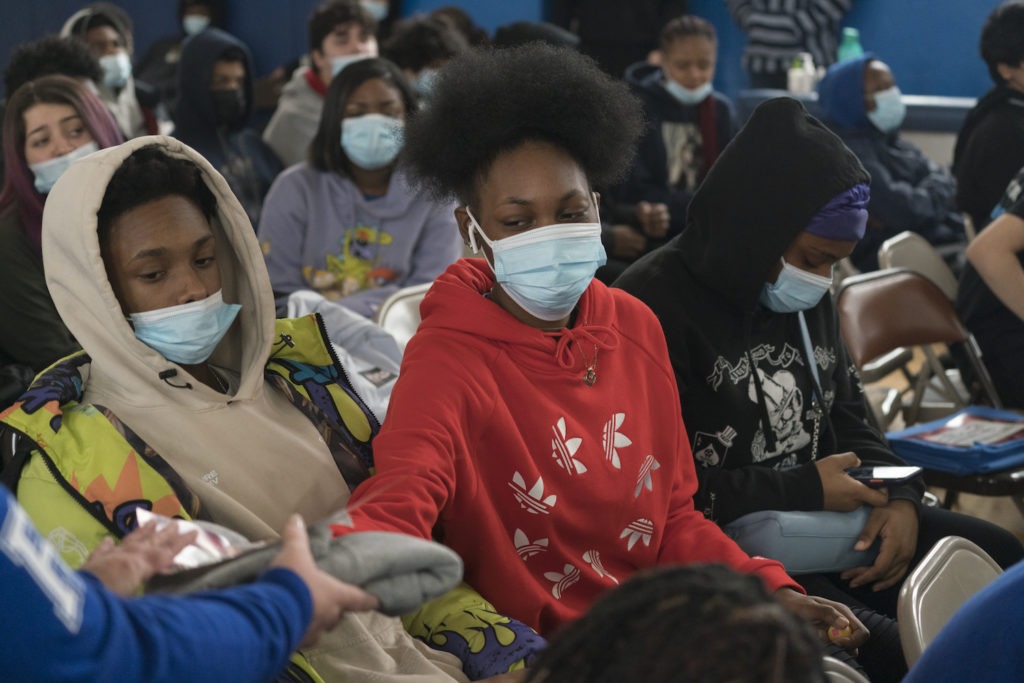
On the Wendy’s job she got earlier in the pandemic, Gerlia kept landing the closing shift, working the fryer, washing dishes, or taking drive-thru orders until 1:30 a.m. She sometimes dozed off in second period math. Assignments piled up. She lagged on college essays. Her senior seminar teacher, Thomas Conley, gently prodded her: Which of her many interests might she pursue after high school? Basketball? Cosmetology school? Studying journalism?
Many of Gerlia’s classmates felt more rudderless than usual, having missed out on 18 months of hashing out plans with friends and teachers in person. As Conley summed it up, “How can I prepare for life after high school when I don’t know what next month will look like?”
At the assembly, the student-of-the-month recognitions celebrated small victories: “participated even when he’s sleeping,” “not afraid to ask questions,” “consistent effort for being on time,” “more engaged in the past couple of weeks.”
“I need to wake up,” Gerlia chided herself, too nervous to open her report card. “This is senior year.”
Then, Kennedy announced the Principal’s Scholars – the straight A kids – who marched to the front to collect certificates and track jackets.
Kennedy called the next name to loud applause.
Gerlia Baker.
But the teen remained completely motionless, her face impassive. She did not get up to collect her award, loath to draw even more attention to herself.
She was still on track to be valedictorian, but the pandemic had taught her how easy it was to fall behind in school.
Early December: Basketball season raises the ante
In first period culinary arts class, Keshawn scrambled to add sugar, flour, and margarine to a mixer. Students in chef Mark Soltis’ kitchen were making batter for gingerbread houses, and Keshawn was cutting it close to the end of the period. He pulled up his disposable face mask and got to work. He was trying to be on his best behavior.
When he walked back into Richards several months earlier, Keshawn had hoped the return would set everything the pandemic had broken right. But a year and a half of remote learning seemed to have drained him of the stamina to make it through an in-person school day. Even the simple routine of getting up, getting dressed, and getting to school was hard to recapture. He often showed up late — or not at all.
“Overall, we have lacked the courage to do things differently. Here we are — back to the old ways. Our imagination is stifled, and our courage is failing.”
He and other students chafed at the masks required by the district and the state, that inescapable reminder that normal remained elusive. In hallways where Enya crooned soothing tunes during passing time, Miller, the special student services coordinator, who sometimes wore a Superman mask, would reach out to pull face coverings up from chins, intoning, “Masks! Masks!” Reminders came constantly over the PA system, in every classroom, at each school gathering.
Then, Keshawn and Leeks, the dean of students, got into an argument over Keshawn’s refusal to mask up. Keshawn raised his voice, blustered for a while, and stormed out of the building.
What Keshawn didn’t know: Leeks would tear up at times when he thought about Keshawn, his charisma, his energy, all the momentum the COVID outbreak arrested. In Keshawn, Leeks saw himself as a teen growing up in Englewood: flush with potential but bent on living in the now.
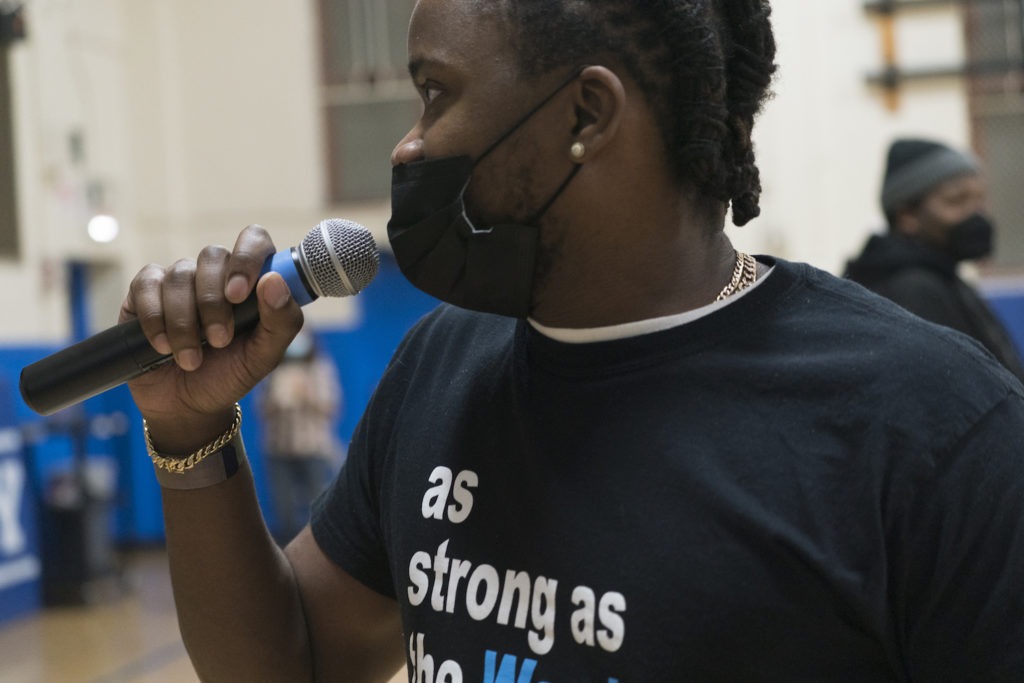
With Keshawn, Leeks was firm: He was not sure if he could allow the teen to play basketball that season after the disrespect Keshawn had shown him in front of his classmates. But alone in his office — with a towering 2016 freshman girls basketball champions trophy and a wall calendar clinging to the long-lost normalcy of August 2019 — the coach worried about losing scarce leverage if he kept Keshawn off the team.
Now, in culinary arts class, Keshawn rushed to finish his batter as the bell rang. Soltis walked over to inspect the mixture.
“Perfect,” he said. “Everybody, this is the way it’s supposed to look — over here in Keshawn’s bowl.”
Keshawn glanced down at his bowl and smiled.
Later in December: Principal feels “a March level of exhaustion”
One evening right before winter break, Kennedy sat on a bench in the Richards gym, taking in the varsity boys basketball game against Catalyst Maria, a charter school.
She looked over at Keshawn, who sat across the gym, hugging a basketball and leaning into the court. After making him sit out the first game and watch his team lose, Leeks let him play this one. But he still kept him on the bench for the opening minutes — his way of keeping his player on notice.
A few minutes into the game, and with the Warriors down by 10, the coach put Keshawn in. Kennedy cheered as the senior glided across the court, driving to the basket. He got fouled, and Kennedy held her breath as Keshawn, his eyes on the hardwood floor at the foul line, dribbled the ball three times, shutting out all distractions.
Then, he looked up — and sent the ball sailing into the net.
Richards would go on to lose the game by just three points, but Keyshawn was back on the court and playing well. Despite sitting out the start of the game, he wound up scoring 24.
The principal hung on every pass and each point, though her mind often drifted to the break ahead. It was pajama day at Richards, and Kennedy was wearing candy cane-patterned plaid bottoms. Only three months into the school year, she already felt a “March level of exhaustion.”
After a string of pandemic-era departures in positions that were tougher to fill than ever, she was down three teaching assistants, a bilingual teacher, a science teacher, a security guard, and a custodian. Teachers were out – sick, with a quarantined child, or tending to surgeries postponed earlier in the pandemic.
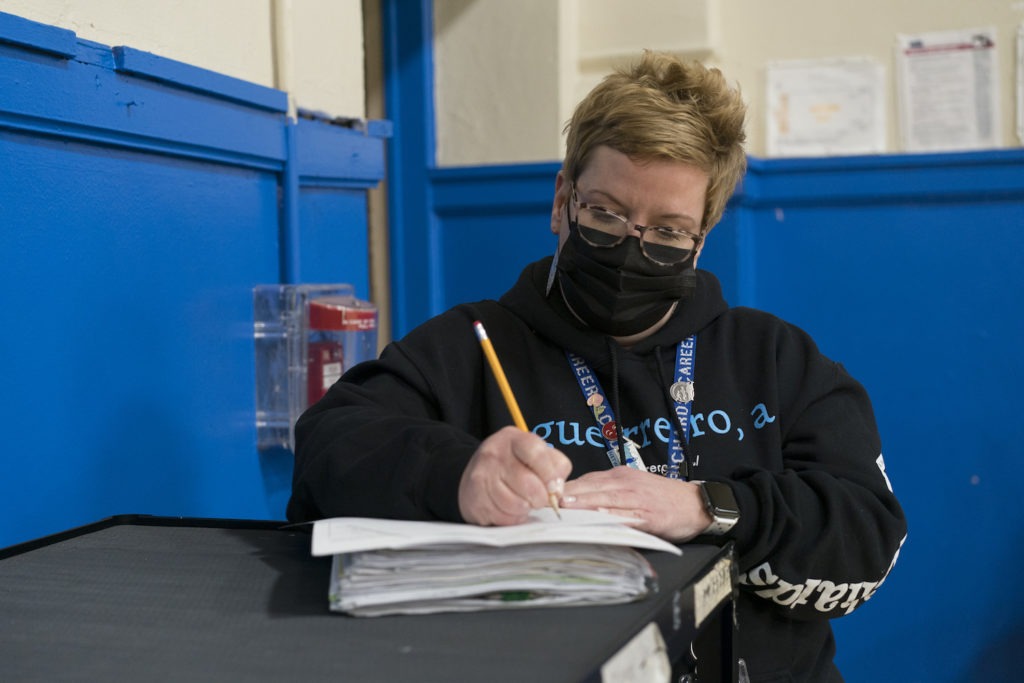
Most days, Kennedy had to spend two-and-a-half hours substitute teaching and pulling lunch hour security duty in hallways. She helped a custodian clean before the Friday vaccination clinic. When new substitute teachers arrived, she asked if she could fetch them something to drink — desperately needing them to come back.
During the new virtual meetings district CEO Pedro Martinez hosted with principals twice a month, Kennedy and other school leaders pitched the idea several times of drafting central staffers to substitute teach or handle other campus duties. But the district was short-staffed too: Some 250 central office employees had resigned or retired since July.
Kennedy had to juggle her other duties with the ongoing battle against COVID. By November, the district’s voluntary testing program was finally up and running after a rocky start. But at Richards, only five out of 240 students and 20 out of 65 staff members had signed up for weekly testing. Roughly only a third of students were vaccinated, despite the in-house vaccination clinic. These challenges reflected deep districtwide disparities in vaccination rates and testing buy-in, with rates at whiter, more affluent North Side schools dramatically higher than those at campuses on the South and West Sides. And the struggle to get students to mask continued.
Kennedy remained focused on her students. The school’s bookends classes struggled the most: By late November, freshmen had racked up more than 130 conduct code infractions, including fights, a marked uptick from the previous pre-pandemic fall. Too many Black boys in that freshman class hovered in the “D club.” Seniors, on the other hand, had seen their attendance dip below 70 percent, a good 10 percentage points lower than before the outbreak.
Earlier that year, U.S. Education Secretary Miguel Cardona told CNN that billions in federal stimulus dollars would allow schools to “really reimagine education and make it better than it was in March 2020.” Randi Weingarten, the head of the country’s largest national teachers union, spoke of a “renaissance in America’s public schools.” And shortly before he was named Chicago schools chief in September, Pedro Martinez said: “It’s not enough to go back to normal. We have to be better with a capital B.”
But if Kennedy heard talk about “reimagining” education one more time, she felt that she might scream. Across the country, evidence of any wholesale overhaul of how public schools serve vulnerable students was still scarce. School leaders and educators had little energy and brain space amid a string of daily crises, large and small. And school systems stayed set in their ways, ringing that period bell manually simply because that’s the way it has always been done.
Related Content
Why not a half-day schedule for teens teetering on the brink of dropping out as they juggle school and jobs?, Kennedy wanted to know. Why not more virtual coursework for the handful of kids who actually thrived during remote learning?
“Overall, we have lacked the courage to do things differently,” Kennedy said in December. “Here we are — back to the old ways. Our imagination is stifled, and our courage is failing.”
A historic influx of federal dollars for school pandemic recovery — including roughly $2.8 billion for Chicago Public Schools — had bought Richards two math tutors, with one more slated to start in January, and a full-time college and career coach. But, so far, the money had not been a game-changer.
Just when it felt like it was all too much, last fall threw even more at the school. A student was shot in the leg a couple of months into the school year, and another student was shot over Thanksgiving break. The day of that December basketball game, Kennedy got a call from the husband of a custodian known for her upbeat, bubbly personality. She had died of COVID.
Kennedy urged her staff to think of the school year in manageable chunks: Can we make it through the next week together? The next three weeks until winter break?
January: A standoff over COVID protocols shuts down classes
During winter break, standing at the Wendy’s fryer with a basket of chicken nuggets, Gerlia had been seized with anxiety: What if the district reverted to remote learning amid the omicron surge?
The return to classes that January had heightened her fears: At Richards, more than a third of students did not show up on the first day after the break. Neither did 17 teachers and staff members. Then a standoff over COVID protocols between the district and its teachers union shut down classes just two days later.
Gerlia worked while school was canceled, but didn’t take on many extra hours beyond the 25 a week she usually put in. She had to help take care of four younger siblings who were also out of school during this stretch and wanted to be ready when classes started again — though nobody seemed to know when that might be. (Students missed five days of school by the time the district and union worked out a new safety agreement.)
Gerlia worried about students like her cousin, Keshawn, who were just regaining a fragile foothold at school. She worried about missing out on the final months of her high school career. She worried about depression creeping up on her again, that feeling of “I’m over everything. It’s a lot in life.”
As another Wendy’s shift ground on, she decided she would no longer give Keshawn a hard time about his grades or his tardies. She told herself: “Everybody’s going through something.”
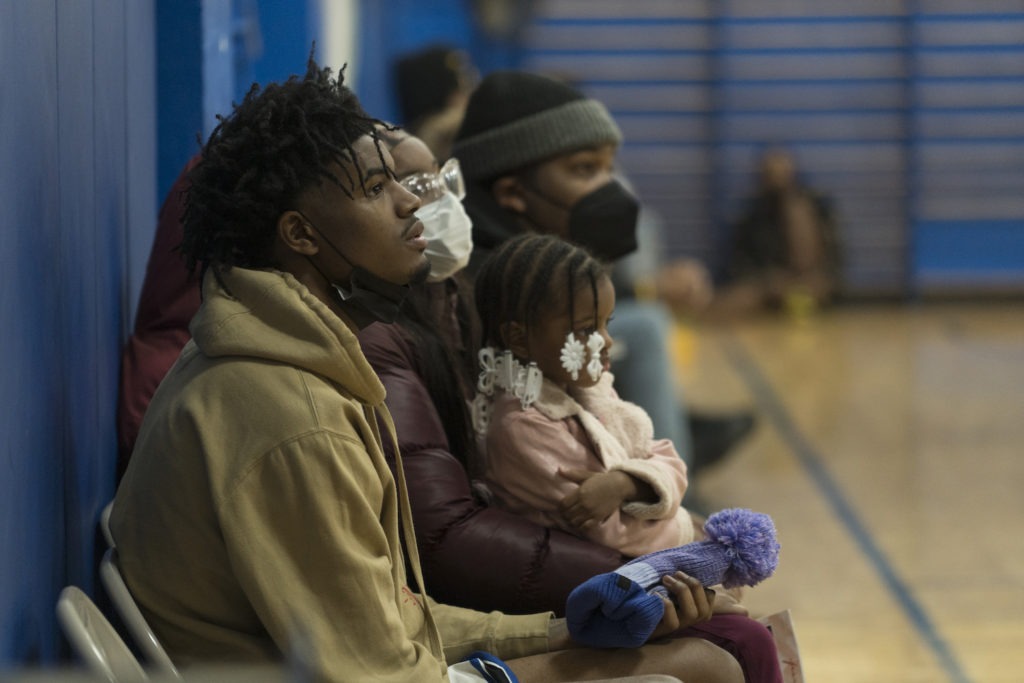
February: Some students catch their stride
As the second semester — with its “back-to-school” buzz — got underway, Kennedy took a breath. She considered the headway her team had made and what still needed to be done:
Leeks, the coach and dean of students, was spending less of his time holding peace circles to mediate conflicts between students, often freshmen. But attendance had slipped to 73 percent, far off the school’s 85 percent goal and decidedly worse than before COVID. He wondered out loud, “Is behavior actually getting better, or are the students just not here?”
Still, the students who were coming were more engaged, and the school was starting to restore a sense of community. The freshman class was almost all deemed “on track,” meaning they had failed no more than one core course.
With 50-some students on the first semester A and B honor roll, there were too many names to print and hand out certificates at an early February awards assembly — “a happy problem,” Kennedy said.
Gerlia and Keshawn were also looking to the future.
Gerlia is still on track to be valedictorian. She secured academic scholarships to several colleges and was leaning toward Western Illinois University, where she hoped to play volleyball as a walk-on and study journalism.
A wrist injury marred the final games of Keshawn’s basketball season, a reminder that he couldn’t count on the sport to bail him out after high school. He pledged to bring a new focus on showing up and doing the work. So far, his attendance is still spotty, but he passed all his first-semester classes and is on track to graduate. Leeks and Monica Wright, Keshawn’s mom, were talking about college options.
At Richards and other schools, the pandemic upheaval has changed how educators and families think about school, with more grace for students, a new regard for mental health, a deeper empathy for both teens and employees. But Kennedy’s heart was “still heavy for the seniors.” And she was still waiting for public education to be reimagined.
Two years after COVID shut down schools and shined a spotlight on stubborn inequities, that much-heralded rethinking largely remains a vague idea. In district after district, the status quo persists: traditional class schedules and calendars, piecemeal efforts to ramp up hiring a more diverse workforce, few bold initiatives to bolster the most vulnerable students.
Still, Kennedy has not given up on bigger changes. Perhaps the coming months — with the latest COVID surge receding and Martinez signaling a new three-year district plan — will finally set the stage for that promised reinvention.
In the meantime, Kennedy and her team will keep focusing on just getting through the week.
This story was produced with Chalkbeat, a nonprofit newsroom focused on education.



